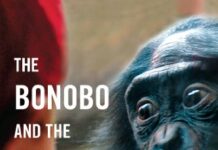
Ebook Info
- Published:
- Number of pages:
- Format: PDF
- File Size: 3.06 MB
- Authors: Frans de Waal
Description
In this thought-provoking book, the acclaimed author of Our Inner Ape examines how empathy comes naturally to a great variety of animals, including humans. Are we our brothers’ keepers? Do we have an instinct for compassion? Or are we, as is often assumed, only on earth to serve our own survival and interests? By studying social behaviors in animals, such as bonding, the herd instinct, the forming of trusting alliances, expressions of consolation, and conflict resolution, Frans de Waal demonstrates that animals–and humans–are “preprogrammed to reach out.” He has found that chimpanzees care for mates that are wounded by leopards, elephants offer “reassuring rumbles” to youngsters in distress, and dolphins support sick companions near the water’s surface to prevent them from drowning. From day one humans have innate sensitivities to faces, bodies, and voices; we’ve been designed to feel for one another.De Waal’s theory runs counter to the assumption that humans are inherently selfish, which can be seen in the fields of politics, law, and finance. But he cites the public’s outrage at the U.S. government’s lack of empathy in the wake of Hurricane Katrina as a significant shift in perspective–one that helped Barack Obama become elected and ushered in what perhaps could become an Age of Empathy. Through a better understanding of empathy’s survival value in evolution, de Waal suggests, we can work together toward a more just society based on a more generous and accurate view of human nature.Written in layman’s prose with a wealth of anecdotes, wry humor, and incisive intelligence, The Age of Empathy is essential reading for our embattled times.”An important and timely message about the biological roots of human kindness.”—Desmond Morris, author of The Naked Ape
User’s Reviews
Reviews from Amazon users which were colected at the time this book was published on the website:
⭐The Age of Empathy: Nature’s Lessons for a Kinder Society By Frans de Waal“The Age of Empathy” is an interesting look at human empathy and what it can teach us how in becoming a better society. Dutch/American biologist with a Ph.D. in zoology and ethology and author of Our Inner Ape and others, Frans de Waal, takes the reader on a journey of empathy and its long evolutionary history. This provocative 306-page book includes the following seven chapters: 1. Biology, Left and Right, 2. The Other Darwinism, 3. Bodies Talking to Bodies, 4. Someone Else’s Shoes, 5. The Elephant in the Room, 6. Fair Is Fair, and 7. Crooked Timber.Positives:1. Engaging and well-written book that is accessible to the masses.2. A fascinating topic in the hands of a subject matter expert, empathy.3. Entertaining and insightful. The book is easy to follow. Professor de Waal is fair and even handed.4. Includes sketches that complement the excellent narrative.5. Format is easy to follow. Each chapter begins with a chapter-appropriate quote.6. Clearly defines the main premise of this book. “There is both a social and a selfish side to our species. But since the latter is, at least in the West, the dominant assumption, my focus will be on the former: the role of empathy and social connectedness.”7. Provocative ideas. “This is not to say that monkeys and apes are moral beings, but I do agree with Darwin, who, in The Descent of Man, saw human morality as derived from animal sociality.” “We descend from a long line of group-living primates with a high degree of interdependence.”8. There are some statements that resonate and leave a mark. “At times of danger, we forget what divides us.”9. Modern evolutionary theories. “Mutual aid has become a standard ingredient of modern evolutionary theories, albeit not exactly in the way Kropotkin formulated it. Like Darwin, he believed that cooperative groups of animals (or humans) would outperform less cooperative ones. In other words, the ability to function in a group and build a support network is a crucial survival skill.”10. The link between empathy and kindness. “There exists in fact no obligatory connection between empathy and kindness, and no animal can afford treating everyone nicely all the time.”11. Discusses key concepts such as yawn contagion. “Yawn contagion reflects the power of unconscious synchrony, which is as deeply ingrained in us as in many other animals.”12. The importance of mimicry. “Not only do we mimic those with whom we identify, but mimicry in turn strengthens the bond.”13. Sympathy versus empathy. “If Yoni were human, we’d speak of sympathy. Sympathy differs from empathy in that it is proactive. Empathy is the process by which we gather information about someone else. Sympathy, in contrast, reflects concern about the other and a desire to improve the other’s situation.”14. Examples given of altruism in apes.15. Helpful advice. “In 2006, a major health organization advised American business travelers to refrain from finger-pointing altogether, since so many cultures consider it rude.”16. The concept of mutualism. “This suggests mutualism and reciprocity as the basis of cooperation, thus placing chimps much closer to humans than to the social insects.”17. Income inequality, say what? “He believes that income gaps produce social gaps. They tear societies apart by reducing mutual trust, increasing violence, and inducing anxieties that compromise the immune system of both the rich and the poor. Negative effects permeate the entire society.”18. The reality of empathy. “Empathy for “other people” is the one commodity the world is lacking more than oil.”19. Evolution in a nutshell. “We may not be able to create a New Man, but we’re remarkably good at modifying the old one.”20. Notes and bibliography included.Negatives:1. In a world looking for black and white conclusions this book offers a lot of gray areas that may not be as satisfying.2. Repetitive.3. Hard to live up to some of his other books.4. Conservative-minded readers may have a tough time dealing with de Waal’s liberal bias.In summary, this was a solid accessible book. Professor De Waal succeeds in educating the public on empathy. His mastery of the topic is admirable and is careful to be grounded on the facts and not to oversell an idea. Some minor quibbles like redundancy and many gray areas keep it from scoring higher but overall a worthwhile read. I recommend it!Further recommendations: “Are We Smart Enough to Know How Smart Animals Are?”, “The Bonobo and the Atheist”, “Our Inner Ape”, “Chimpanzee Politics” by the same author, “Animal Wise: How We Know Animals Think and Feel” by Virginia Morell, “Social: Why Our Brains Are Wired to Connect” by Mathew D. Lieberman, “Beyond Words: What Animals Think and Feel” by Carl Safina, “The Soul of an Octopus” by Sy Montgomery, “Animal Wise” by Virginia Morell, “Zoobiquity” by Barbara Natterson-Horowitz, “The Secret Lives of Bats” by Merlin Tuttle, and “Last Ape Standing” by Chip Walter.
⭐Upon completing this book, I have immediately added it to my top-ten list of books on leadership. The Age of Innocence should be required reading in every high school. De Waal develops the truth of our human nature and its tendencies to survive in a way that answers virtually every current question about the quality of life. Every person in government or other leadership position should read the book and then there should be ongoing collaborative discussions about the points made therein.
⭐[My copy of this book is a paperback, published by Three Rivers Press.]What this book demonstrates—for me, at least—is that de Waal should continue his study of non-human animals, and cease making comments about the relevance of primatological (and related) research findings for humans; for I find many of the comments that de Waal makes about humans in this book are painful to read. Either cease making comments about humans, or start recognizing the “missing variable” that I briefly discuss in this review.The deficiency that I perceive in this book, in his comments about humans, is one that is, unfortunately, common in the social science literature: It fails to recognize that a “Discrepancy” began to develop, during the Neolithic (about 12,500 years ago), between (a) the way of life for which humans had become “designed,” prior to the Neolithic (i.e., foraging), and (b) the ways of life that developed during and after the Neolithic; and that this Discrepancy probably had important implications for human behavior since the Neolithic.I say “probably” because scholars have basically ignored the Discrepancy, with but a few exceptions.The concept itself goes back over a century, being implicit, e.g., in some of Thorstein Veblen’s writings, including this, in (p. 19) in his 1914 The Instinct of Workmanship and the State of the Industrial Arts:But there is no warrant for assuming that each or any of these successive changes in the scheme of institutions affords successively readier, surer or more facile ways and means for the instinctive proclivities to work out their ends, or that this sequence of change is more suitable to the untroubled functioning of these instincts than any phase that has gone before. Indeed, the presumption is the other way.Then, there is The Hare and the Tortoise: Culture, Biology, and Human Nature (1986), and entire book about the concept. Still more recently is this book, written seven years after de Waal’s book, The Good Book of Human Nature: An Evolutionary Reading of the Bible, by anthropologist Carel van Schaik and historian Kai Michel (2016)—a book that could not, obviously, have influenced de Waal in his writing of The Age of Empathy.The latter fact is not the only problem with the Discrepancy concept, however: Although the concept is implicit in some of Veblen’s writings, he never developed the concept; although Barash wrote a book about the concept, that book does not take a historical approach; and although the van Shaik-Michel book does take a historical approach, its scope is rather narrow, and the Discrepancy concept (referred to using the term “mismatch” in that book) is not used in a satisfactory manner in their book.My point here is that because the Discrepancy concept has received so little attention by scholars, it’s not surprising that that concept plays no role in his book. The fact that it does not makes the book disappointing for me, however. And, I would add, I’m convinced that the book would be much more worthwhile than it is—regarding, specifically, de Waal’s comments about “humans”—had de Waal been aware of this concept.Although little of a definitive nature can be said at present (as I noted earlier) regarding the importance of this concept, it can be said with confidence, e.g., that although the behavior of foragers had both a genetic-instinctual and acquired basis, human behavior during and after the Neolithic began to involve more of the latter, increasingly. The reason? Developments such as the following that began to occur during the Neolithic: (a) agriculture began to displace foraging as a source of sustenance; (b) humans became increasingly sedentary; (c) human groups increased in population size; and (d) social class systems began to develop—along with the exploitation of some by others that is a “feature” of such systems.Presumably the Discrepancy had—and has—relevance for the changes in institutions, in intellectual developments (e.g., the development of ideologies), in technological developments, etc., over the centuries; and such developments have had implications for the changes in behavior that occurred, with humans, during and after the Neolithic.An implication of such developments that has relevance for de Waal’s book is that new causal factors were emerging, over the centuries, that were affecting human behavior—so that the behaviors of “civilized” peoples came to deviate in important ways from the behaviors of foragers. I must add, of course, that this fact of new causal factors being added has relevance for social science in general—in that few social science scholars have been aware of this fact, and their research findings have therefore suffered in consequence.I would recommend that this gap be filled were it not for the (apparent) fact that the “time is almost up” for our species: It appears that our demise, as a species, will arrive “soon”—if not by the unleashing of thermonuclear devices, then global warming, with both of those possibilities being “fruits” of the Discrepancy!
⭐It was an interesting read for sure, I learned a lot more about empathy shown throughout our cousin and distant related species. I already don’t believe humans are particularly special, so I was mostly curious to hear a primatologist’s perspective.That said, I didn’t agree with some conclusions he was drawing at times, and with some information he wasn’t including in his book (which is ok, I don’t find that a huge problem). For example, he is honest about his own views on politics, or his own levels of empathy etc, but he does tend to have rather black/white views on some things.Say, gender – he doesn’t mention that in humans, gender is actually a pretty fluid concept irrespective of the body type, and he tends to look at chimps and bonobos, their males and females, and draw parallels between us and them. That’s fine, he’s not completely off, but he lacks the nuance. Maybe chimps also have gender fluidity, maybe not, but humans certainly do, so it’s trickier to say ‘well males in humans do THIS, and females do THAT’. Do you mean biological males, or male brained people?Another thing that I noticed particularly, is that he pretty much never discussed disability in the human community. I’m disabled, and was curious to see what his suggestion would be for a more empathetic world towards people like myself, but there was almost nothing. He does, however, discuss how ‘society hates and discourages freeloading’ at length. Which made me feel kinda sad, as a lot of people already view disability as a form of freeloading and discuss my people in terms of ‘drain on national resources’, which is hurtful enough. Seeing a scientist who studies empathy specifically basically provide more justification for the people who have bullied me and millions of other disabled is kinda disheartening.But then again, that’s something that he doesn’t seem to think much about in his daily life.Also, there is no mentioning that humans may be a neotenic branch of apes (that we retained child ape features), which would put us closer in behaviour to child chimps than the adult ones. But that’s a nitpick perhaps, one man cannot know all.Overall, I do recommend the book, have a read, keep your mind open but also remember you can have differing opinions even if someone is supposedly an expert. 🙂
⭐This book confirms what many of us feel we know. that many animals are not dumb beasts in any sense of the word.A highly readable,informative, enlightening and intelligent book which looks in detail at animal behaviours over many years, considers much relevant research, and makes us consider again, that we are not the only species which experiences empathy. Also. anyone reading this cannot continue to believe that animal welfare, whether in zoos , theme parks or our intensive or non organic farms, is not paramount, as all living creatures to some degree have awarenesses of other animals hitherto unesplained. Essential reading for these times , where a little more empathy for our fellows would not be a bad thing.Finally, we have to oomprehend that we have inherited our capacity for empathy as part of our evolution, as empathy pays, in the survival game.
⭐first class
⭐All good
⭐Everything was OK.
Keywords
Free Download The Age of Empathy: Nature’s Lessons for a Kinder Society in PDF format
The Age of Empathy: Nature’s Lessons for a Kinder Society PDF Free Download
Download The Age of Empathy: Nature’s Lessons for a Kinder Society PDF Free
The Age of Empathy: Nature’s Lessons for a Kinder Society PDF Free Download
Download The Age of Empathy: Nature’s Lessons for a Kinder Society PDF
Free Download Ebook The Age of Empathy: Nature’s Lessons for a Kinder Society



